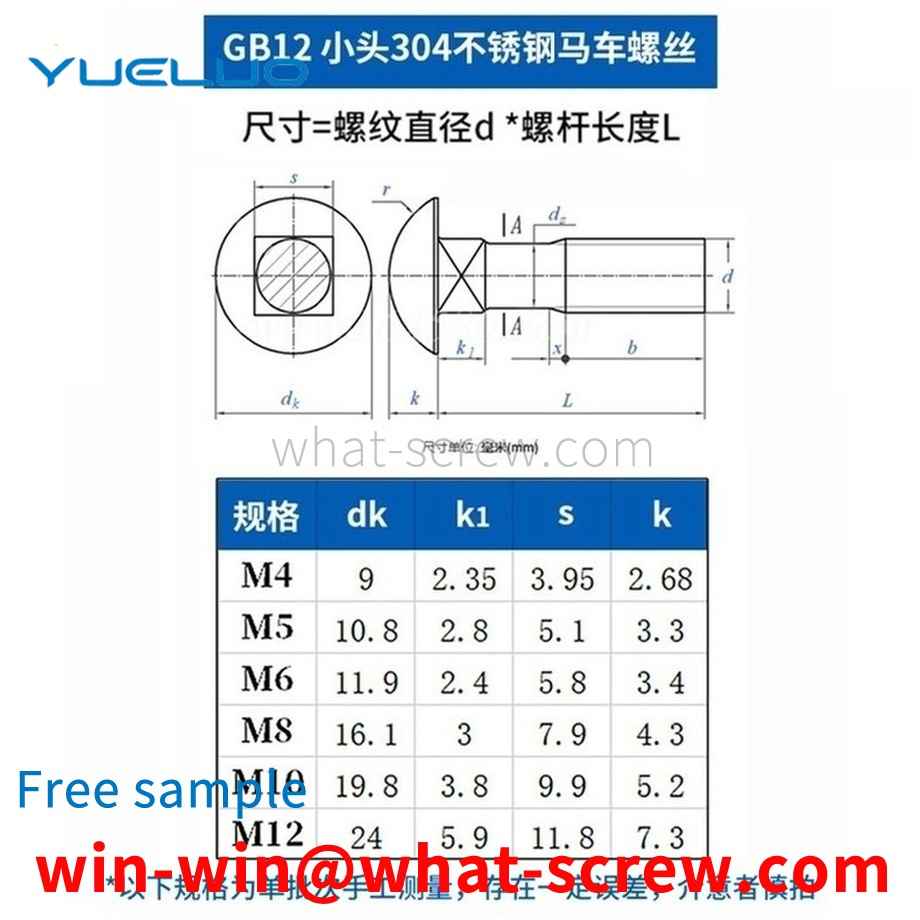As an important connecting part in the automobile assembly process, the screw plays a vital role in the safety performance of the automobile. The assembly of each component of the vehicle cannot be separated from the function of the screw. In the connection of the automobile assembly and its parts, the screw connection As well as simple structure, easy maintenance and disassembly, it is widely used. There may be thousands of screws on a car. The screw connection of each part has its own function and function. Once one or some screw connections fail, it will be It will lead to the loosening or even separation of the connected parts. If the car is running, it is likely to cause some parts to fail or break away. The light ones will cause the main functions of the car such as steering and braking to fail, potentially affecting driving safety. If it is not found in time, it will lead to major safety accidents and even endanger the lives of people. The failure of the car screws will cause the safety hazard of the whole vehicle, and will also cause customers to worry and complain, thus affecting the reputation of the company and endangering the life of the company. cycle.
The flat key is a key that relies on the two sides as the working surface and transmits the torque by the extrusion of the key and the side of the keyway, and is mostly installed on the shaft. If the flat key is used for a long time or is in a bad working environment for a long time, dust, oil, etc. will inevitably be stuck between the flat key and the keyway. Since the flat key has no ejector threaded hole for disassembly, it is difficult to dismantle, and during the disassembly process A little carelessness will cause damage to the flat key.
One of the steps in the screw production and processing process is to slot the screw head to facilitate the use of a screwdriver when tightening or loosening the screw. Generally, companies use manual sorting, and then use the cutting knife to slot the front end screws through the track, which is inefficient, and because the screws are not fixed, the cutting knife may easily fly out or break the blade during cutting. It is a safety problem, and after cutting, the screw head has rough workmanship and burrs, which is easy to hurt the hand.
The post-treatment of nickel-phosphorus plating includes two main processes of driving hydrogen and polishing. ①Hydrogen drive; according to the relevant standards, the hydrogen drive temperature after plating is 200±10℃, and the treatment time is 2h. 200 ℃ is beneficial to eliminate hydrogen embrittlement, relax internal stress, improve the bonding force between the coating and the substrate, and improve the corrosion resistance of the coating. ②Polishing; the polished bolt has a bright appearance, but in order to better improve the quality of the coating, smooth the tiny traces, and obtain a bright mirror-like surface, the coating needs to be polished with a polishing machine.
Stud bolts generally need to be surface treated. There are many types of bolt surface treatments. Generally, electroplating, blackening, oxidation, phosphating, and electroless zinc flake coating are commonly used. However, electroplated fasteners account for a large proportion of the actual use of fasteners. Especially in automobiles, tractors, home appliances, instrumentation, aerospace, communications and other industries and fields are more widely used. However, for threaded fasteners, not only a certain anti-corrosion capability is required in use, but also the interchangeability of threads must be ensured, which can also be called screwability here. In order to meet the dual-use performance of anti-corrosion and interchangeability required by threaded fasteners in use, it is very necessary to formulate special plating standards. GB/T5267.1-2002 [Threaded fastener electroplating layer] standard is one of the national standards fastener surface treatment series of standards, the standard includes: GB/T5267.1-2002 [fastener electroplating layer]; GB/T5267.2-2002 [Electrolytic zinc flake coating for fasteners] Two standards. This standard is equivalent to the international standard ISO4042; 1999 [Threaded fastener electroplating layer]. This standard replaces the GB/T5267-1985 [Threaded Fastener Electroplating Coating] standard.
We have many years of experience in the production and sales of screws, nuts, flat washers, etc. The main products are: copper hexagon bolts, GB6170 high-strength nickel-plated hexagon nuts, enlarged aluminum sealing washers, DIN6915 hexagon nuts and other products, we can provide you with suitable products. Your fastener solution.



















 Service Hotline
Service Hotline




